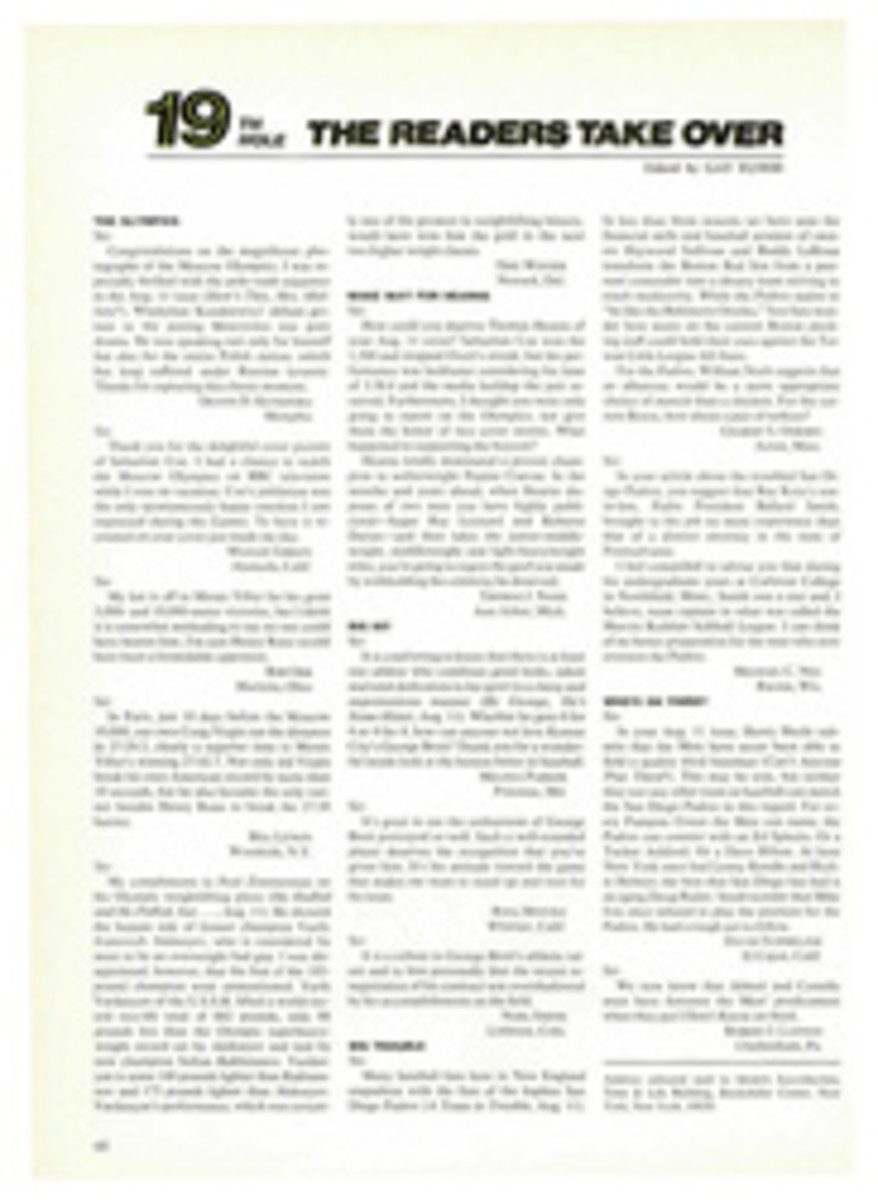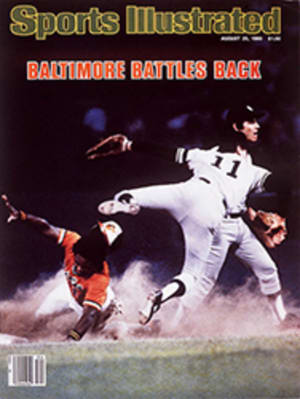
Meet the Rolls-Reuss of pitchers
Early this spring, when Los Angeles Pitcher Jerry Reuss found himself back where he started—which was not starting—he decided to take stock of his debits and credits. On the minus side of the ledger, the lefthander was in the bullpen, a place of detention he thought he had escaped through grit, toil and good works late last season.
And on the plus side? "Well," he said to himself, "things could be a lot worse. I've got my health. I've got my wife. I've got my new son. I'm living where I've always wanted to live. I'm with a contender. I'm still pitching, and whether you're starting or relieving, it's still the same game. Most of all, I'm comfortable with myself. I've got my confidence back. I've got the feeling that nothing is going to stop me now." The ayes obviously had it. Reuss dutifully reported to the bullpen.
He hasn't always been so irrepressible. Two years ago, when he pitched only 83 innings for Pittsburgh, twice sitting idle for 19 days between appearances, he reached what he describes as a "low ebb." He began to see himself not so much as a major league pitcher who had once won 18 games—for the Pirates in 1975—but as a kind of "insurance policy," someone to be kept around in the event of injury to worthier moundsmen. He asked to be traded, and the Pirates finally obliged him at the start of the '79 season, in return for a sore-armed Rick Rhoden. Even the trade was embarrassing for Reuss. And, of course, the starter-rich Dodgers didn't need him in the rotation, so he was sent once more to the isolation ward. But by June the once-formidable Dodger starting corps had been ravaged by an epidemic of sore arms, and Reuss was called forward. Although his overall record was 7-14 with a 3.54 ERA, in September he was 3-2 and 1.25.
So when this season began, Reuss, who was approaching 31, confidently saw himself in the big picture. Alas, he was again out of it. Don Sutton, who wanted to be traded, wasn't. Naturally, he had to start. Dave Goltz was acquired as a free agent for several million dollars, so he had to start. Rick Sutcliffe had been Rookie of the Year in 1979, so he had to start. Burt Hooton had become a staff ace, so he had to start. And Bob Welch had made a dramatic comeback from a sore arm and a bout with alcoholism, so he had to start. And Reuss, the intrepid lefthander, had to relieve. But even then he wasn't slated to be the ace reliever. That job was intended for another rich free agent, Don Stanhouse.
Reuss plugged away, accumulating three wins and three saves in eight relief appearances and holding his ERA to 1.42 in 19‚Öì innings. In the meantime, Sutcliffe was pitching so poorly he was dropped from the rotation. And when Goltz came down with the flu on May 16, Reuss received his first starting assignment. Ironically, it was against the Pirates, and he won 8-6. To the Dodgers' deep gratitude, he has been a starter since.
Reuss didn't lose a game in June, and on the 27th of that month he pitched the season's only no-hitter, against the Giants, barely missing a perfect game when Shortstop Bill Russell made a throwing error in the first inning. Last Friday night, before 50,933 fans in Dodger Stadium, he beat the Reds 3-1 for his 14th win against only four losses, pitching the Dodgers into momentary repossession of first place in the tight National League West race and lowering his ERA to 2.18, best among National League starters. "He has been a godsend," says Manager Tommy Lasorda, whose references to the Deity have not been so frequent these days.
Reuss has more than just a new attitude working for him this year. Atrophied muscles in the left side of his back have been revived through an exercise program prescribed by the eminent Dodger orthopedist, Dr. Frank Jobe. Reuss is running 30 to 45 minutes every other day and working out on Nautilus equipment to keep his 6'6" body at a svelte 220 pounds. His exaggerated pitching motion has been, in the words of Dodger Pitching Coach Red Adams, "quieted down," so that his deliveries are smoother and more deceptive. And his fastball, which once soared, is now sinking. Reuss isn't striking out as many batters as he once did, but he's getting more ground-ball outs—11 by the Reds on Friday. And, as he puts it, "the ball is staying in the park," not sailing over outfield fences.
Reuss walked only one Red Friday, a tribute to newfound concentration that blots out everything—score, situation, standings—except the pitch he is about to deliver. He has learned to get more rotation on his fastball by studying the techniques of such sinker-ball artists as Randy Jones of San Diego, and by listening "very carefully" to part-time Dodger Pitching Coach and full-time living legend, Sandy Koufax. "I spent most of spring training hanging around Koufax, just hoping to pick up something by osmosis," says Reuss, only half kidding. "Actually, I've been relearning my pitching mechanics. For eight years I was a high-ball pitcher. I know now that location and movement are more important than velocity." In layman's terms: stuff and control are better than speed.
The sinking fastball is a prime reason for Reuss' astonishing performance this year. He recalls throwing only five breaking balls in his Candlestick Park no-hitter. Afterward, when his catcher, Steve Yeager, was being commended by newsmen for calling such an intelligent game, Reuss remarked with mock indignation, "It doesn't take a Rhodes scholar to hold one finger down all night." The low hard one is Reuss' staple, but an occasional curve and a tantalizing change relieve the monotony. On Friday, after Johnny Bench hit a non-sinking fastball for a long second-inning homer to score the Reds' only run, he saw little but slow and slower stuff thereafter. In Bench's next at bat, Reuss got two quick strikes on him with a change and a curve. After an intervening fastball, Bench reached so far out in front for a changeup that he looped the ball harmlessly to second base.
Reuss' pitching style and his mental approach may have changed in the past year, but one thing has not—his sense of humor. "Jerry likes to have a lot of fun," says reserve Outfielder Jay Johnstone, his partner in pranksterism. "We do get together from time to time on certain practical jokes." Lasorda is a ready target for their japery. Reuss and Johnstone slipped beneath camera range during one of their manager's recent television interviews, and while he strove bravely not to break up, they tied his shoelaces together. Reuss once stepped behind Lasorda's desk and reversed roles with his manager, lecturing him on the ordeal of power. "I want to use you more," Reuss said with managerial solemnity, "but my hands are tied. I'll tell you one thing, though, when I get the chance, you'll be the first one I'll go to." Reuss and the since-departed Ken Brett decided that the final game of last season called for a truly inspired jest. Reuss suggested that they put on their uniforms, take seats in the Dodger Stadium stands and spend the game yelling and screaming at the players. But then they came up with a better idea: they left their seats in the dugout in the middle innings and made their way to the stadium maintenance office, where they covertly donned coveralls and joined the ground crew in dragging the infield, exaggerating the routine so outrageously that even Lasorda recognized that something was amiss. The manager immediately called upon Brett to pitch.
Reuss grew up in the St. Louis suburb of Overland, Mo., and he yet associates summer with "soft breezes through the trees and the voice of Harry Caray doing Cardinal broadcasts." But he was not a particularly avid Cardinal fan, yearning instead to play somewhere in California. "I wanted to live in California long before I'd ever been there," he says. "I was the only kid in St. Louis in the '60s who used surfer slang." However, he signed with the Cardinals in 1967, after the team agreed to finance a Hawaii vacation for his parents and his own college education, which he spent at three different institutions. After pitching three years for the Cardinals, he was traded to Houston and then to Pittsburgh.
"There are certain things you can do to make sure you're traded," says Reuss. "You can put your uniform number on your license plate. You can buy a home in the city where you play. And you can become the player representative."
Reuss has taken some of these steps in his various stopovers, but by the time Houston shipped him to Pittsburgh, he had despaired of ever reaching California, so he simply bought a house in Santa Barbara, and proposed that this should be a permanent home for him and his family. "Within a year," he says, "I was divorced."
He is happily remarried now and living in Orange County, almost 40 miles from Dodger Stadium. He has a pretty dark-haired wife, Terri, and a 9-month-old son, Jason, who is as blond as Jerry. The fellows in his neighborhood are "as crazy as I am," he says happily. "We play trick-or-drink on Halloween." He has his new fastball. And if he continues to pitch the way he has, he might even have a Cy Young Award.
TWO PHOTOS

